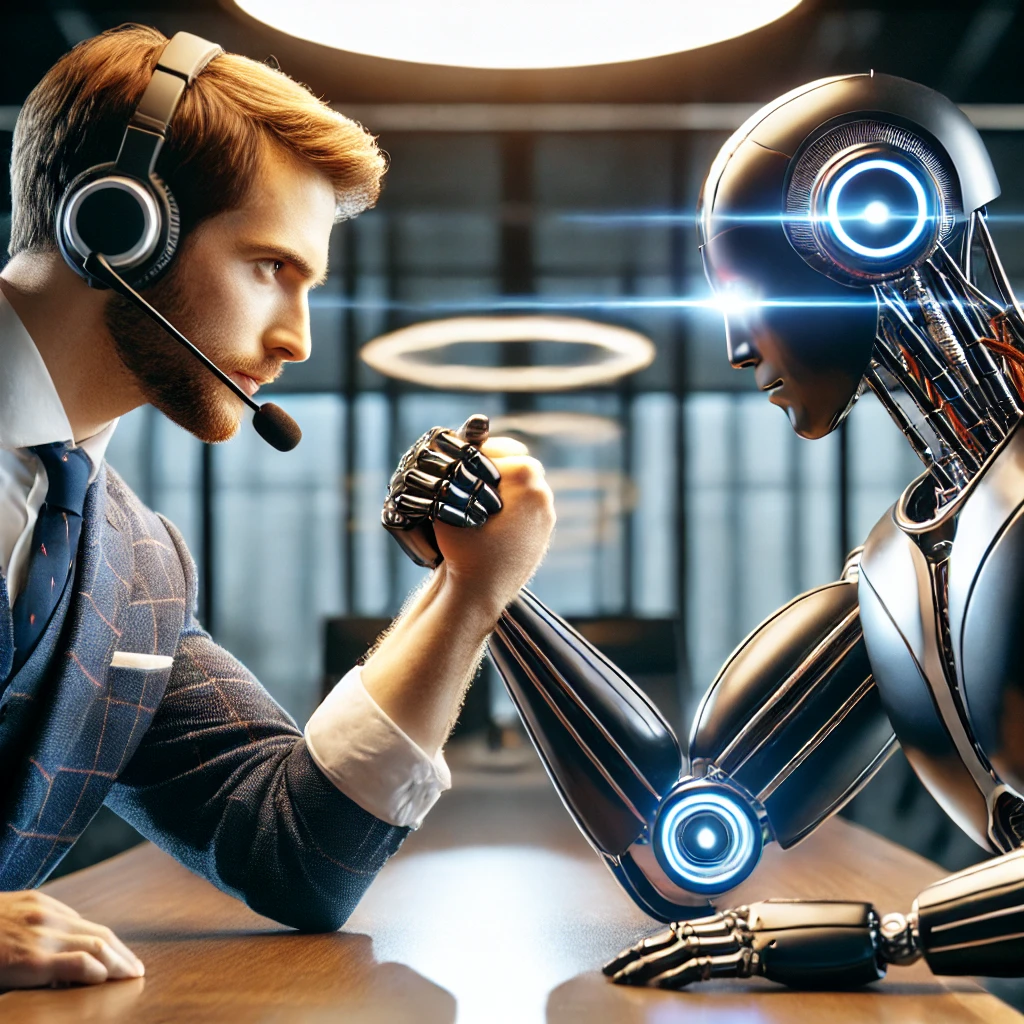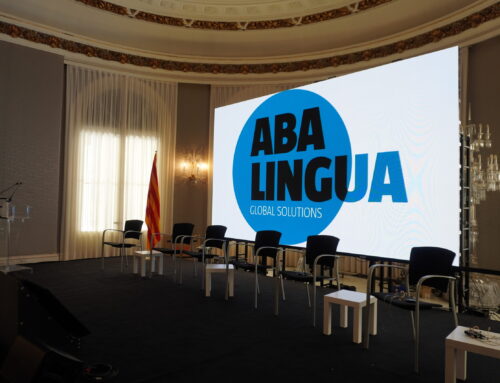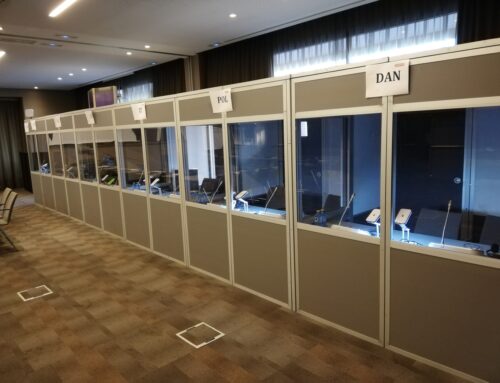
The rapid advancements in artificial intelligence (AI) have led to significant improvements in language processing and machine translation. AI-powered interpretation tools can now provide real-time translations, making them an attractive option for certain scenarios. However, despite these advancements, AI interpretation remains far from matching the quality, nuance, and reliability of professional human interpreters. While AI may serve as a useful tool in specific contexts, it is not yet—and may never be—a suitable replacement for human interpretation in high-stakes events.
How AI Interpretation Works and Its Limitations
AI interpretation follows a multi-step process:
- Transcription: In this initial stage, the AI system listens to the spoken words and converts them into text in the source language. It uses speech recognition algorithms that analyze the sound patterns, speech nuances, and context to accurately capture what is being said. This process might involve identifying accents, handling background noise, and distinguishing between speakers in a conversation
- Translation: After transcription, the AI moves on to translating the text into the target language. This step uses machine translation algorithms, such as neural machine translation (NMT), which are trained on vast amounts of bilingual text data. The translation system breaks down the sentences and rewords them in the target language, while maintaining the meaning, tone, and context of the original speech. These systems often consider grammar rules, idiomatic expressions, and contextual clues to produce the most accurate translation.
- Text-to-Speech Conversion: In the final stage, the translated text is fed into a text-to-speech (TTS) system. This AI technology uses voice synthesis to generate spoken words. It converts the written translation into natural-sounding speech, including proper intonation, pitch, and rhythm. Modern TTS systems can create voices that sound human-like and can adjust their speech patterns based on the emotion or emphasis required in the translation.
Each of these steps relies on advanced AI techniques to ensure smooth and effective communication across languages. This sequential process inherently introduces a delay that is longer than that of a professional human interpreter, who can process meaning in real time and adjust dynamically to the speaker’s pace and tone. Additionally, background noise greatly affects AI interpretation, making it less reliable in uncontrolled environments.
Key Limitations of AI Interpretation
- Lack of Contextual Understanding
AI interpretation tools rely on algorithms and machine learning models trained on vast datasets. While they can recognize patterns and translate words and phrases, they struggle to grasp the broader context, cultural references, and subtle nuances that human interpreters effortlessly incorporate into their work. A phrase that may have multiple meanings depending on the situation is often misinterpreted by AI, leading to confusion or even diplomatic mishaps in high-stakes scenarios. - Inability to Interpret Tone and Emotion
Interpretation is more than just converting words from one language to another—it involves understanding tone, intent, and emotion. A skilled human interpreter can adjust their delivery based on the speaker’s style, ensuring that meaning is not only preserved but also conveyed effectively. AI, however, remains largely robotic, often misinterpreting sarcasm, humor, or sentiment. For example, an AI system may take an ironic remark literally, completely distorting the intended message. - Challenges with Specialized Terminology
Many international conferences and corporate events involve complex, industry-specific terminology. While AI tools are improving in their ability to handle specialized vocabulary, they are still prone to errors, especially in fast-paced, live interpretation settings where context is constantly shifting. A misinterpreted technical term in a medical or legal conference could have serious consequences, reinforcing the need for professional human interpreters with domain expertise. - Inability to Handle Accents, Dialects, and Background Noise
AI interpretation systems often struggle with regional accents, dialects, and speech variations. Human interpreters, on the other hand, can quickly adapt to different speakers and adjust their interpretation accordingly. This adaptability is crucial in multilingual events where speakers may have varying levels of proficiency in a given language. Additionally, background noise can significantly degrade AI interpretation accuracy, as the system will attempt to interpret any sound it detects, leading to confusion and miscommunication. - AI Interprets Everything It Hears
One of the critical flaws of AI interpretation is that it translates everything indiscriminately. A human interpreter applies judgment, filtering out background noise, side conversations, or inappropriate expressions that should not be interpreted literally. AI, on the other hand, will attempt to translate any audible sound, which can result in irrelevant, confusing, or even offensive outputs. This lack of discretion makes AI unreliable in professional and high-stakes settings. - Robotic and Unnatural Voice
Another major drawback of AI interpretation is the lack of natural speech patterns. While AI-generated voices have improved, they still sound robotic and monotonous compared to a skilled human interpreter who conveys meaning through intonation, pacing, and emphasis. This robotic delivery can make it difficult for listeners to stay engaged, particularly during long conferences or discussions requiring a dynamic and engaging tone.
Our Approach: Helping Clients Make Informed Decisions
At Abalingua, we always advise our clients to choose human interpretation when accuracy, cultural sensitivity, and real-time adaptability are crucial. However, we understand that AI interpretation can be a practical option in specific cases. We have the necessary tools to provide AI interpretation, but we ensure that our clients are fully aware of its current limitations before they make a decision.
To help our clients make an informed choice, we strongly recommend testing AI interpretation before committing to it for an event. We encourage our clients to send us a sample video, which we then process through our AI interpretation system. This allows them to see firsthand the quality of the AI-generated output and determine whether it meets their event’s requirements. By experiencing the results in advance, our clients can make an educated choice about whether AI interpretation is suitable for their needs.
Why Human Interpreters Are Irreplaceable for High-Stakes Events
For conferences, diplomatic summits, medical congresses, and legal proceedings, accurate interpretation is not optional—it is a necessity. A single misinterpreted phrase can lead to miscommunication, financial losses, or even international conflicts. Human interpreters bring cultural intelligence, adaptability, and deep linguistic expertise that AI simply cannot replicate.
While AI technology continues to advance, the inherent limitations of machine-based interpretation mean that human interpreters remain the gold standard for high-stakes events. If a client insists on AI interpretation, we will always advise them to consider human interpreters first. However, should they choose AI, we will ensure they are fully aware of its constraints and provide them with the necessary tools to assess whether it meets their expectations.
At Abalingua, we specialize in providing professional simultaneous interpretation services with highly trained interpreters and state-of-the-art audiovisual solutions. If your event demands precision, cultural sensitivity, and real-time adaptability, human interpreters remain the best choice.




